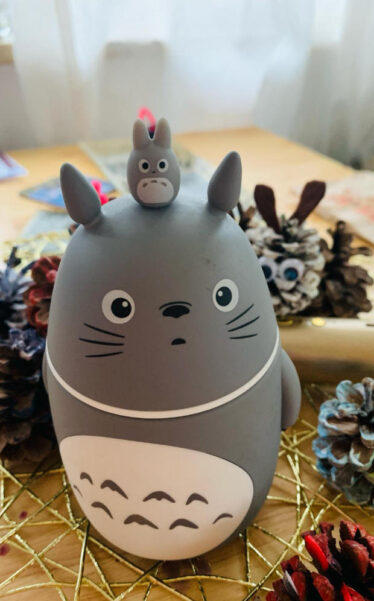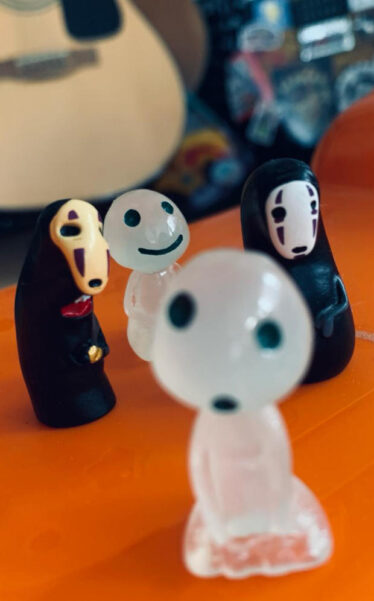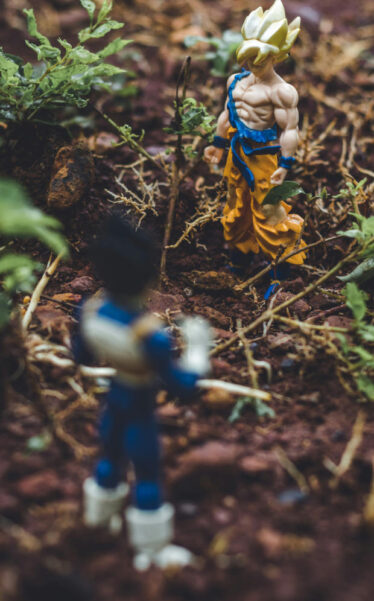In the vast realm of entertainment, few cultural phenomena have captivated audiences worldwide quite like anime.
Originating in Japan, anime has transcended borders. It has captured the hearts of fans with its diverse genres, vibrant storytelling, and distinctive artistic styles. In this art form imagination knows no bounds and narratives just unfold so naturally.
The roots
It is important to begin with the roots of anime. They can be found in Japan’s long tradition of visual storytelling. Their traditions include art forms such as ukiyo-e (woodblock prints) and manga (comic books).

As a type of animation, anime is an art form that comprises many genres found in other mediums. In Japanese, the term anime is used to refer to all animated works, regardless of style or origin. That being said, in English-language dictionaries, anime is defined as “a style of Japanese animation” or as “a style of animation originating in Japan”.
The first recognized Japanese animated film is generally considered to be “Namakura Gatana” (The Dull Sword), which was released in 1917. This silent short film showcased early animation techniques and humor inspired by Japanese folklore and was directed by Jun’ichi Kōuchi.
In the early 20th century, Japanese artists and animators began experimenting with animation techniques influenced by Western animation pioneers like Walt Disney.
Throughout the latter half of the 20th century, anime continued to evolve and diversify. Studios like Toei Animation and Studio Ghibli produced iconic films and series that captured the imagination of audiences both in Japan and abroad.
It must be noted that, in the aftermath of World War II, Japan experienced a period of rapid industrialization and economic growth. In return, many animation studios were established.
Osamu Tezuka, known as the “God of Manga,” played a crucial part in shaping the early anime industry with his influential works such as “Astro Boy” (Tetsuwan Atom) and “Kimba the White Lion” (Jungle Taitei). Tezuka’s innovative storytelling techniques and expressive character designs set the standard for future generations of anime creators.

The 1980s saw the emergence of mecha anime (featuring giant robots) with titles like “Mobile Suit Gundam” and “Macross,” as well as the rise of shonen (boys) and shojo (girls’) anime genres catering to different demographics.
With its iconic imagery of towering robots engaged in epic battles, mecha anime has become a cornerstone of the medium, captivating fans around the world and leaving an indelible mark on popular culture.
The origins of mecha anime can be traced back to the post-World War II era in Japan, a time of rapid industrialization and technological advancement.
After the war, Japan emerged as a global leader in robotics and engineering, and mecha anime became a symbol of the country’s technological prowess and creativity.
So, early manga artists and animators began exploring themes of mechanized warfare and futuristic technology in their works.
In addition to their entertainment value, mecha anime also served as a reflection of Japan’s cultural and technological aspirations.
The 1990s marked a turning point for anime’s global expansion.

Shows like “Dragon Ball Z,” “Sailor Moon,” and “Neon Genesis Evangelion” gained widespread popularity outside of Japan. In return, the groundwork for anime’s mainstream acceptance in Western markets was set.
In the case of Dragon Ball Z, its emphasis on epic battles, friendship, and self-improvement set a standard that many subsequent Shonen series would strive to emulate.
On the other hand, Sailor Moon holds a special place in the hearts of many fans for its empowering representation of female characters. By featuring a team of magical girls who fight evil and save the world, the series challenged gender norms and stereotypes, inspiring a generation of young girls to embrace their inner strength and courage.
Last but not least, Neon Genesis Evolution is revered for its groundbreaking approach to the mecha genre, deconstructing traditional tropes and exploring themes of existentialism, trauma, and the nature of consciousness.
In the 21st century, anime has continued to thrive as a global cultural phenomenon. This was in part thanks to streaming platforms like Crunchyroll and Netflix which made it easier than ever for fans to discover new titles and connect with fellow enthusiasts.
Today, anime encompasses a vast and diverse array of genres, styles, and themes, ranging from action-packed shonen adventures to thought-provoking science fiction and heartwarming slice-of-life dramas.
Its influence can be seen not only in animation but also in fields as diverse as fashion, music, and gaming, making it a truly multifaceted cultural force with a legacy that continues to inspire and captivate audiences worldwide.
An art form
Anime is much more than just a genre, it’s an art form.
It has rich and diverse visual styles. It serves as a canvas for creators to experiment with everything from fantastical landscapes to emotionally charged character designs.
It could be about the ethereal beauty of Studio Ghibli’s hand-drawn masterpieces or the dynamic, stylized action sequences of shonen classics. The truth is that anime stands as a testament to the boundless possibilities of animation.
One of anime’s most alluring aspects is its ability to cater to a vast spectrum of tastes and preferences.
From heartwarming slice-of-life tales to mind-bending science fiction, anime spans genres that resonate with diverse audiences.
Whether you’re drawn to the adrenaline-pumping battles of action anime, the intricate mysteries of psychological thrillers, or the whimsical charm of the magical girl series, there’s an anime for every soul.
The ability to convey emotions is the chore of anime. This means that we as spectators find ourselves immersed in exaggerated expressions and poignant music.
Music is a very important part of this art form. Anime soundtracks are carefully composed and curated. They enhance the emotional impact of scenes, creating a harmonious blend of visuals and music.
Cultural and Global Impact
Anime has become a cultural phenomenon. It extends beyond television screens, infiltrating fashion, art, and even inspiring entire subcultures dedicated to celebrating this unique form of storytelling.
The ability to transcend language and cultural barriers is unparalleled.
Some characters that have transcended all boundaries are: Pikachu, Sailor Moon, and Goku. They have become cultural icons recognizable to people around the world.
Goku (Dragon Ball series): One of the most recognizable and beloved anime characters of all time. Goku is the main character of the “Dragon Ball” series created by Akira Toriyama (a Japanese manga artist and character designer). Goku is a Saiyan (a race of extraterrestrials in the Dragon Ball anime and manga and its sequels) warrior who embarks on epic adventures to protect the Earth from various threats, often showcasing incredible feats of strength and martial arts prowess.

Pikachu (Pokémon): As the mascot of the Pokémon franchise, Pikachu has become synonymous with the world of anime and gaming. It was designed by Atsuko Nishida and Ken Sugimori. With its cute, yellow, mouse-like appearance and electric powers, Pikachu has captured the hearts of fans worldwide, appearing in countless video games, TV series, movies, and merchandise since its debut in the late 1990s.
Naruto Uzumaki (Naruto series): Naruto Uzumaki, the titular character of Masashi Kishimoto’s “Naruto” series, is a young ninja with dreams of becoming the strongest ninja and leader of his village, known as the Hokage. Naruto has become an enduring symbol of perseverance and friendship.
Sailor Moon (Sailor Moon): Usagi Tsukino, also known as Sailor Moon, is the main protagonist of Naoko Takeuchi’s magical girl anime and manga series. With her iconic sailor suit and magical powers, Sailor Moon fights alongside her friends to protect the world from evil forces while navigating the challenges of adolescence and friendship.

Luffy (One Piece): Monkey D. Luffy, the captain of the Straw Hat Pirates in Eiichiro Oda’s “One Piece” series, is known for his adventurous spirit, boundless optimism, and rubber-like abilities gained from consuming a Devil Fruit. As he searches for the legendary One Piece treasure, Luffy encounters a diverse cast of characters and embarks on epic quests across the vast seas of the world he inhabits.
Light Yagami (Death Note): Light Yagami, the protagonist of Tsugumi Ohba and Takeshi Obata’s “Death Note” series, is a high school student who gains possession of a supernatural notebook that allows him to kill anyone whose name he writes in it. With his intellect and ambition, Light becomes a complex anti-hero as he seeks to create a utopian world free from crime, leading to a gripping battle of wits with the enigmatic detective L.
Miyazaki’s Protagonists (Studio Ghibli): While not a single character, the protagonists of Hayao Miyazaki’s films, such as Chihiro from “Spirited Away,” Princess Mononoke from “Princess Mononoke,” and Howl from “Howl’s Moving Castle,” are celebrated for their resilience, courage, and compassion. These characters embody universal themes of self-discovery, environmentalism, and the power of empathy, resonating with audiences of all ages.
Animation Excellence
Anime has been an example of animation excellence. Perfect examples of this are My Neighbor Totoro and Spirited Away, both movies by Studio Ghibli.

My Neighbor Totoro was directed by Hayao Miyazaki and it stands out as a beloved classic, embodying the studio’s commitment to storytelling, artistry, and imagination.
This movie embodies the essence of childhood innocence and wonder, capturing the magic of imagination and the joys of discovery.
The film follows two young sisters who encounter whimsical forest spirits, including the iconic Totoro, as they navigate the challenges of growing up and coping with family hardships.
The bond between Satsuki and Mei (the sisters), as well as their interactions with the enigmatic forest spirit Totoro, resonate with audiences on a deeply emotional level, evoking feelings of nostalgia, warmth, and empathy.
It received numerous awards, including the Animage Anime Grand Prix prize, the Mainichi Film Award, and the Kinema Junpo Award for Best Film in 1988.
Spirited Away, was directed by the acclaimed Hayao Miyazaki and produced by Studio Ghibli.

It showcases the unparalleled artistic mastery of Studio Ghibli, with its lush hand-drawn animation, breathtakingly detailed backgrounds, and imaginative character designs. Simply put, every frame is a work of art.
At its core, this movie is a coming-of-age story that explores universal themes of identity, courage, and resilience.
It contains subtle yet powerful messages about environmentalism and the importance of living in harmony with nature.
Spirited Away has achieved widespread acclaim and recognition on a global scale, It won the Academy Award for Best Animated Feature in 2003 and became the highest-grossing film in Japanese history at the time of its release.
Both movies are a masterpiece of animation that has touched the hearts and minds of viewers around the world.
Provoking Narratives
We must understand that anime is celebrated for its thought-provoking and emotionally resonant narratives. Series like “Death Note” explore morality and power, while “Neon Genesis Evangelion” delves into the complexities of human relationships and existentialism.
Most of the time, anime tackles mature themes, challenging viewers to contemplate the intricacies of the human condition in ways that are both profound and deeply moving.
Some of the most common themes found in anime include:
1. Many anime series focuses on characters’ journeys of self-discovery and identity formation as they navigate the challenges of adolescence or adulthood.

2. Friendship is a recurring theme in anime, with many series emphasizing the importance of camaraderie, loyalty, and mutual support.
3. Courage and perseverance, highlighting characters’ resilience in the face of adversity.
4. Romance is a common theme in anime, ranging from lighthearted romantic comedies to intense dramas exploring the complexities of love and relationships.
5. Themes of justice, redemption, and the consequences of one’s actions are frequently explored.

6. The conflict between nature and technology, exploring themes of environmentalism, industrialization, and the impact of human development on the natural world. These themes are often explored in science fiction and fantasy settings.
7. Existential themes, questioning the nature of existence, consciousness, and the meaning of life.
8. Themes such as discrimination, prejudice, inequality, and political corruption are explored through allegorical storytelling and metaphorical narratives.
9. The horrors of war and the human cost of conflict, examining themes of violence, trauma, and the consequences of warfare on individuals and society.
10. Many anime series transport viewers to fantastical worlds filled with magic, mythical creatures, and epic adventures, offering an escape from reality and sparking the imagination.
Overall, the diverse range of themes found in anime reflects the medium’s ability to explore complex ideas and universal truths, resonating with viewers on emotional, intellectual, and philosophical levels.
Redefining Boundaries
Anime’s versatility has transcended genre boundaries, inspiring artists to explore a diverse range of themes and subject matter.
The medium’s ability to seamlessly shift from fantastical realms to gritty, realistic portrayals has encouraged artists to break free from conventional genre constraints. This freedom of expression has reinvigorated traditional art forms, pushing artists to experiment with narratives that defy categorization.
This is exactly why the future is so bright and limitless for anime. As anime continues to evolve, so too does its impact on the world of art.

Emerging technologies, such as virtual reality and augmented reality, offer new possibilities for artists to explore immersive storytelling experiences inspired by anime aesthetics. The ongoing dialogue between anime and art promises a future where creativity knows no bounds, and artists worldwide continue to draw inspiration from the transformative legacy of anime.
The medium has also seen increased recognition in prestigious award ceremonies and film festivals, further solidifying its status as a legitimate form of artistic expression.
The rise of anime coincided with the advent of digital technology, and the two phenomena have grown in tandem. The accessibility of digital tools and software has allowed artists to experiment with new techniques, mirroring the dynamic visuals often seen in anime.
From digital painting to animation software, artists globally have embraced these tools, democratizing the creative process and enabling a more diverse range of voices in the art world.
Conclusion
Anime stands as a catalyst for change, challenging conventions and inspiring a new generation of creators. Its influence is not confined to the realm of animation.
Anime has permeated every corner of the art world, shaping aesthetics and narratives. As anime continues to evolve, its impact on art remains a dynamic force, inviting artists to embrace a world where the boundaries between cultures, mediums, and creative expressions are fluid and ever-expanding.
The fusion of visual aesthetics, storytelling prowess, and cultural resonance within anime elevates it beyond the label of mere animation, positioning it as a dynamic and enduring art form that continues to captivate audiences worldwide.


